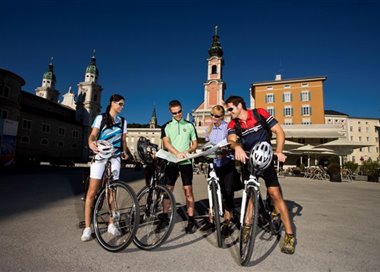
Mozartplatz - Salzburg
The Mozartplatz is a rectangular square, very much a landmark in its own right in the historic center of the city of Salzburg, methodically constructed by demolition of various merchant houses under Wolf Dietrich von Raitenau in 1588.
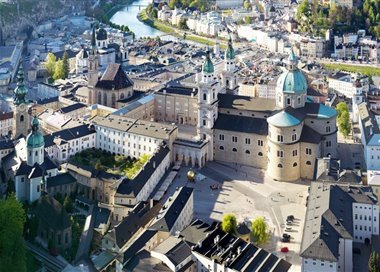
DomQuartier - Salzburg
Baroque Authority – Baroque Glory 15,000 magnificent square metres – 2,000 stunning exhibits – 1,300 moving years

Glasenbachklamm - Elsbethen
Glasenbachklamm, the canyon-like valley formed by the <\/b>Klausbach, is located right at the gateway to Salzburg City.
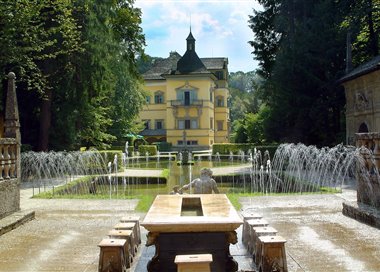
Castle Park Water Hellbrunn
Markus Sittikus von Hohenems was elected as Salzburg’s prince archbishop in 1612. From 1613 to 1615, he built an Italian-style villa suburbana outside the Salzburg city gates, incorporating a late Gothic stately home.
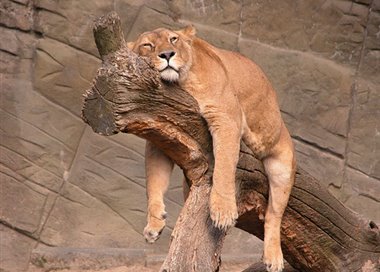
Zoo Hellbrunn - Anif
Around 800 animals - 140 species - live on the 14-hectare zoo grounds in spacious, open enclosures as close as possible to their natural habitat. Zoo visitors experience unique insights into the lives led by lions, jaguars, bears and more.
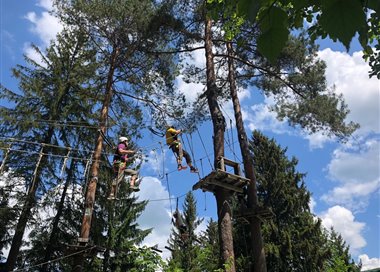
Climbing Park Forest Pool Anif
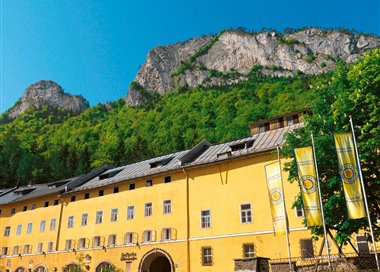
Birreria Braugasthof Hofbräu Kaltenhausen
For more than 500 years, the famous beer from Kaltenhausen has been poured within these old walls.
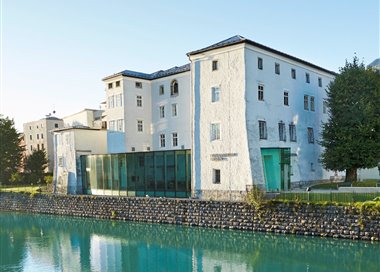
Museum of Celtic culture - Hallein
One of the most important museums of Celtic culture.
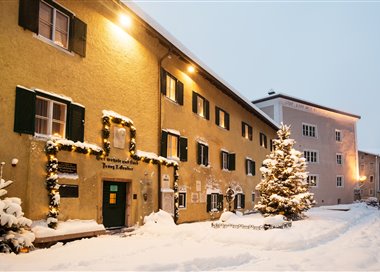
Stille-Nacht Museum Hallein
At the Silent Night Museum in Hallein, original manuscripts and documents detail the creation and dissemination of the world’s most famous Christmas song, “Silent Night! Holy Night!”
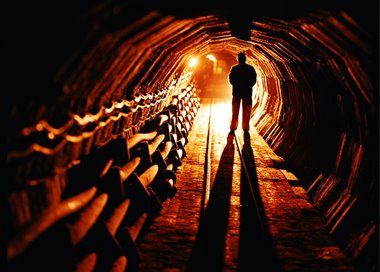
Salt Mine Bad Dürrenberg
A trip through the centuries. The Bad Dürrnberg Salt Mine is an exciting excursion destination in the salt town of Hallein.
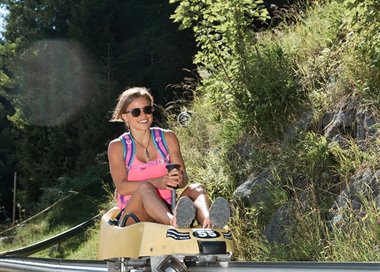
"Keltenblitz“ – Alpine Summer Coaster
A great fun way to come down the mountain, even the second time!
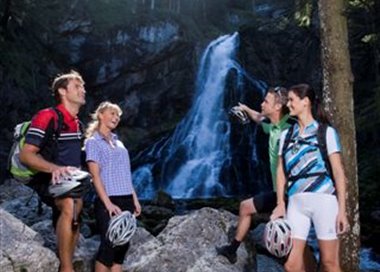
Golling Waterfall
Golling Waterfall, also known as the Schwarzbachfall, carries as much as 15,000 liters of spring water per second (maximum volume during snowmelt and after lengthy rainfall).
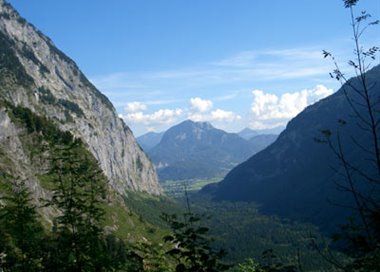
Bluntautal - Golling
It is a short valley, but one abundant in water, with the Fischbach flowing through it and finally emptying into the River Salzach.
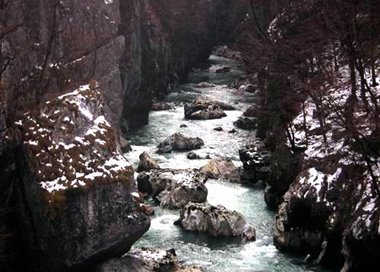
Salzachöfen - Pass Lueg
The Salzachöfen, also known as the Salzachklamm, is a gorge that has been created as the Salzach river has cut its way through the northern Limestone Alps between the Hagen- and Tennengebirge mountains.
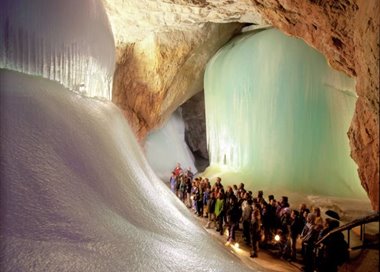
Eisriesenwelt - Werfen
The world’s biggest ice cave, natural monument.
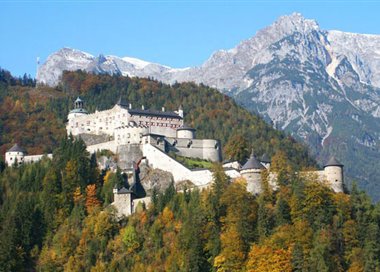
Burg Hohenwerfen - Werfen
Hohenwerfen Castle is a medieval fortress, located in the Pongau district amid the northern Limestone Alps, and is comparable in its construction to Hohensalzburg Fortress in Salzburg, which was built in roughly the same years.
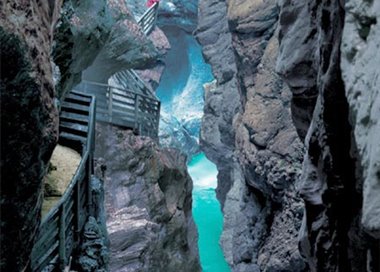
Liechtenstein Gorge - St. Johann im Pongau
The powerful rushing of the waterfall, the mossy stones in a lush green, an atmosphere full of legends, and rays of sun, which make rainbows appear in the fine mists of water.
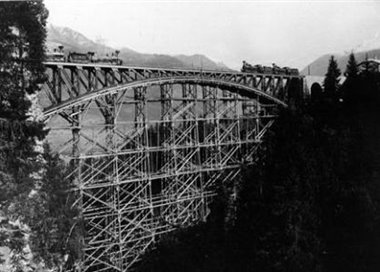
Museum Tauernbahn - Schwarzach
In the former carriage house and in the new museum building created by architect A. Krichanitz you will be able to view historical train exhibits, an exhibition about the history of the Tauernbahn railway an a model railway with replicas that ran on the Tauernbahn line.

Schwarzach Water Park
The Schwarzach Water Park is a nice excursion tip for the whole family and is close to the Alpe Adria cycle path and the Tauern cycle path.
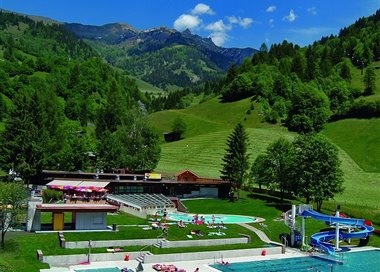
Dorfgastein Water Park
The Dorfgastein Water Park is a highly-recommended destination for families.
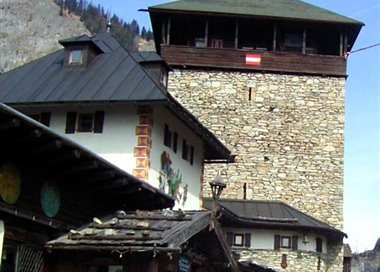
Klammstein Castle in Dorfgastein
The Klammstein Castle is a wonderful excursion tip for the whole family.
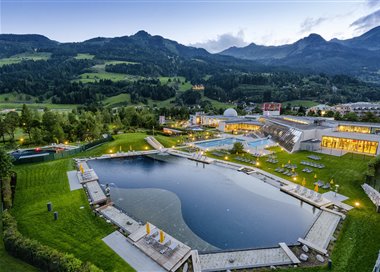
Bad Hofgastein Alpine Spa
Elemental Time in the Alpine Spa Gastein.
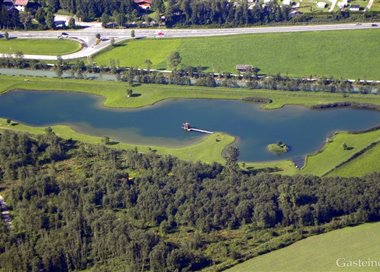
Gasteiner swimming lake
The Gastein swimming lake enjoys a sunny setting in Gastein Valley between Bad Gastein and Bad Hofgastein.
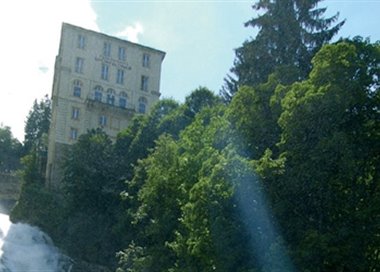
Gastein museum - Bad Gastein
The Gastein Museum offers informative and entertaining insights into the history of this spa town.
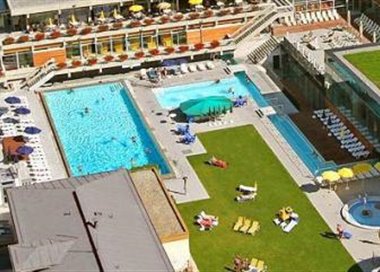
Felsentherme Gastein
This spa offers recreation & fun.
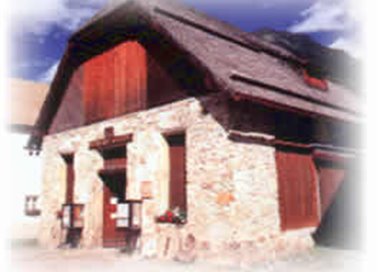
Altböckstein Mining Museum
Awaiting you is the Salzstadl Museum
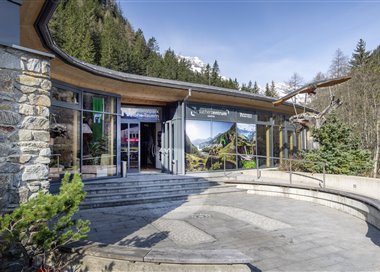
Besucherzentrum Mallnitz
DISCOVER INVISIBLE WONDERS!
Look into an unknown world: hidden creatures, ancient organisms, alien shapes and surprising beauty.
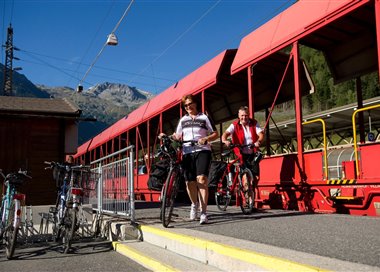
Tauernschleuse Böckstein-Mallnitz
Heading South (Salzburg - Grado): At the end of the Gastein Valley, you take the railway at the Tauern motorail (Böckstein – Mallnitz) to the south side of the main Alps ridge. This train service usually runs hourly and takes 11 minutes. Bicycles can be taken along.
Heading north (Grado - Salzburg): From Mallnitz you take the railway at the Tauern motorail (Mallnitz - Böckstein) to the north side of the main Alps ridge. This train service usually runs hourly and takes 11 minutes. Bicycles can be taken along.
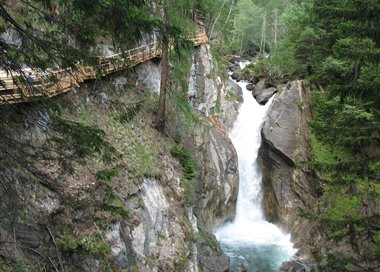
Groppenstein gorge
Groppensteinschlucht is a wonderful, adventurous gorge along the Mallnitzbach in Carinthia. The entrance to the gorge is located in Raufen/Räuflach Obervellach. The gorge is signposted from the road.
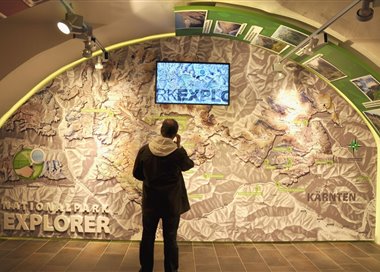
Marktplatz - Obervellach
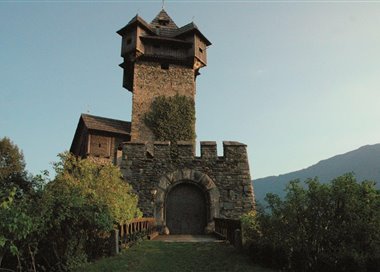
Burg Falkenstein
Imaginatively conceived barbican, added in ca. 1900 to Oberfalkenstein Castle, which stands 200 meters further up (today a ruin).
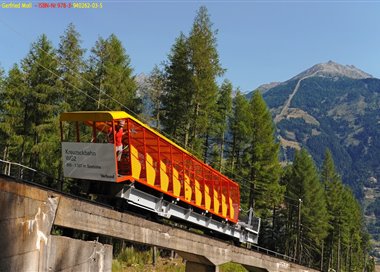
The Panoramic Kreuzeckbahn Cable Car
The Kreuzeckbahn cable car will take you on a romantic ride lasting 11 minutes up to the Rosswiese, the ca. 1,200 m-high mountain station of the lift.
Once there, one of the most beautiful mountain hiking areas in the Alps is awaiting you: the Kreuzeck group, with one of the most striking lookout mountains of the Tauern region, the Salzkofel (2,498 m).
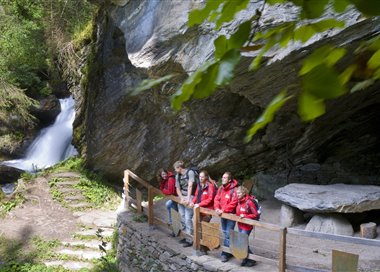
Barbarossaschlucht - Mühldorf

Römermuseum Teurnia/St. Peter in Holz
The hill of St. Peter in Holz (4 km west of Spittal/Drau) has been inhabited since the 12th century B.C. As of ca. 50 A.D., the older Celtic settlement was absorbed into the larger Roman town.
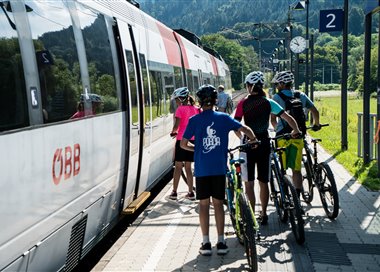
Radtransfer Spittal – Bad Gastein
Information and prices at www.oebb.at
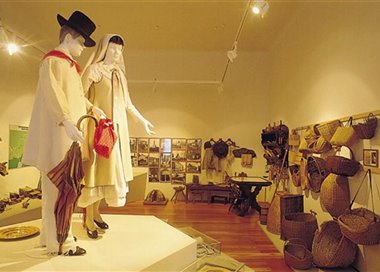
Museum für Volkskultur - Spittal an der Drau
The Museum for Folk Culture is a privately administrated museum, run by a registered association, the "Bezirksheimatmuseum Spittal/Drau e.V.".
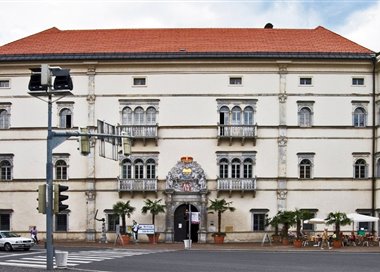
Schloss Porcia - Spittal an der Drau
Schloss Porcia in Spittal an der Drau in Upper Carinthia / Austria is a Renaissance castle built in the 16th century in the style of Italian palazzo, and is sometimes described as "the most beautiful Renaissance building north of the Alps".
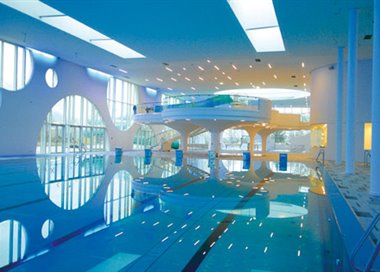
Erlebnisbad Drautal Perle - Spittal
The sports&adventure pool in Spittal an der Drau
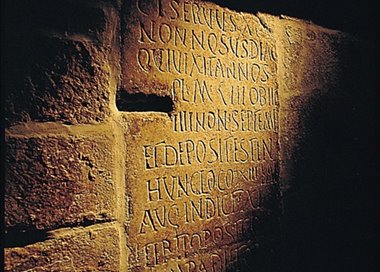
Museum Carantana Molzbichl - Spittal an der Drau
Sensational finds from the Early Middle Ages led to the foundation of the Carantana Molzbichl Museum.

Draufähre Lansach - Feffernitz
Located directly on Drau Bike Route R 1 is the Lansach – Feffernitz ferry, which runs in the summer months across the Drau between the market towns of Weissenstein and Paternion.
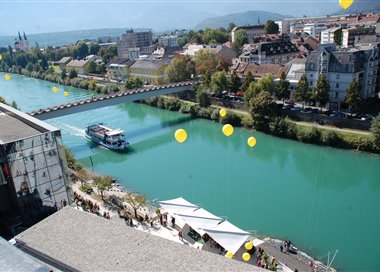
Drauschifffahrt - Villach
MS LANDSKRON
Built 1984 - first bow-lander ship in Austria

The Stadtpfarrturm in Villach
The Stadtpfarrturm in Villach measures 94 meters, making it the tallest church tower in Carinthia.
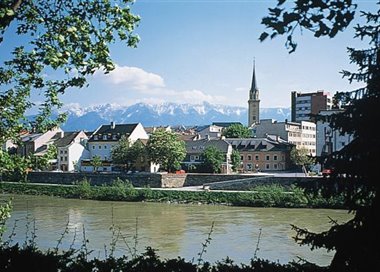
Villach
The city of Villach is famous for its vibrant lifestyle: its Fasching festivities and the Villach Fair attest to that fact.
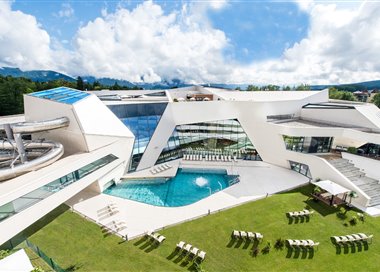
Kärnten Therme Warmbad-Villach
In the spa community of Villach, Austria’s most modern spa and wellness temple is being created!
The construction for the new KÄRNTEN SPA started in June 2010. After its completion in the summer of 2012, it will leave no wish unfulfilled here in Villach.
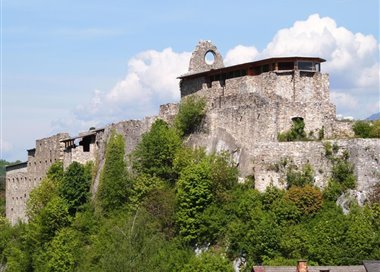
Klosterburg Arnoldstein
Simon Wallner in England had met the production of crushing by "pouring down the hill".
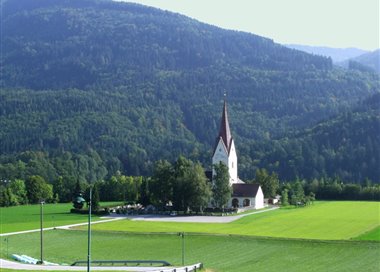
Andreaskirche - Thörl-Maglern
The Gothic frescoes inside the church 800th champion Thomas created from Villach, an artistic personality of the 15th C.

Tarvisio
Tarvisio is one of Friuli Venezia Giulia's most important ski areas and mountain resorts. Surrounded by the Julian Alps and rich in wide valleys and woods - the Tarvisio Forest, with its 24,000 hectares, is Italy's largest State forest.
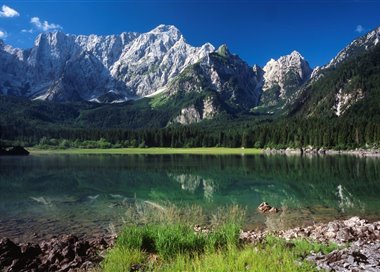
Fusine Lakes
The Fusine Lakes' basin is one of the most beautiful place of the region.
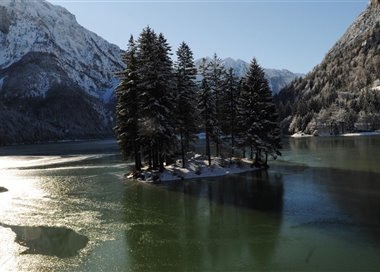
Predil Lake
The Predil lake (or Raibl lake) is located few kilometres far from Travisio, in an ancient glacial basin.
The water is clear and cold, of an intense green-blue colour; in an island, wreck of a morainic area, partly destroyed, partly submerge, create an evocative landscape.
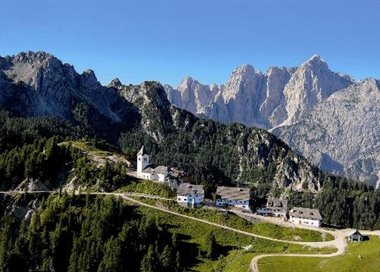
Monte Lussari
To enjoy an unparalleled view of the whole chain of the Julian Alps, nothing is like reaching the mystic Sanctuary of the Madonna of Lussari - surrounded by a tiny hamlet with the same name - taking the enthralling Path of the Pilgrim winding through the woods of the Tarvisio Forest.
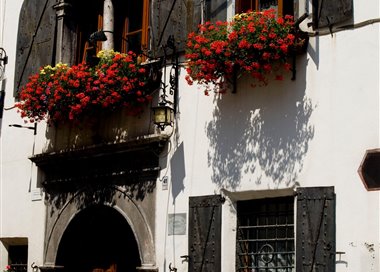
Ethnographic museum Palazzo Veneziano
The ethnographic museum of Malborghetto is located in the 17th century Palazzo Veneziano, one of the most interesting buildings in Val Canale for its history and architecture.
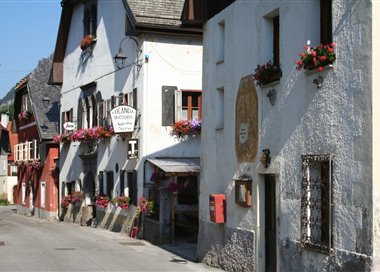
Malborghetto-Valbruna
Malborghetto-Valbruna, located in the mountains near the skiing area of Tarvisio, is an excellent starting point for excursions, trekking, hiking and snowshoeing.

Rio Bianco and Cucco Reserves
Steep rugged rock walls and Norway spruce, black pine and larch woods.
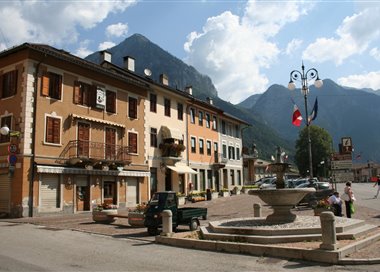
Pontebba
Pontebba, situated in the Tarvisio mountain area, is the main town of Valcanale, inhabited already in the Roman age.
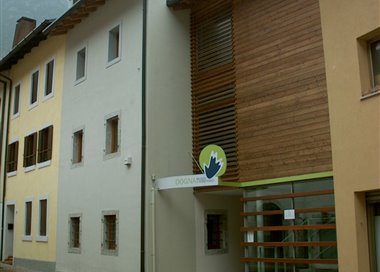
Museum of the Territory in Dogna
The Museum of the Territory in Dogna is divided into three sections: the paleontological section, the historical section and the ethnographic section.
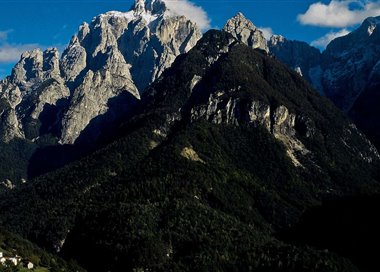
Dogna
The municipality of Dogna is situated at the entrance to the homonymous valley, dominated by the Montasio mountain range.
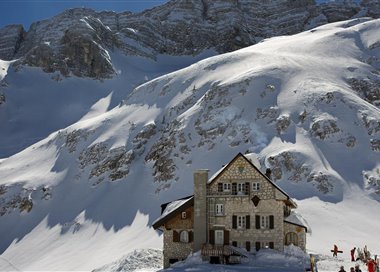
Sella Nevea Adventure Park
The Sella Nevea Adventure Park, built in October of 2005 in a wood of 8,000 sqm near the forecourt of the Canin Cableway, was officially opened on Saturday 20th May 2006.
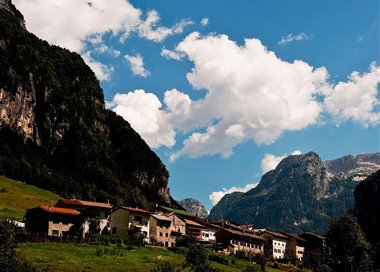
Chiusaforte
Pleasant village along the river Fella, placed just in front of the valley "Val Raccolana", it have always had a strategic role of control on the roads towards the valley "Canal del Ferro".
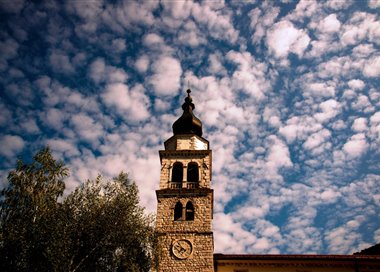
Resia
Resia is situated in a magical and secluded valley, where a community of Slav origin lives, that preserves an ancient language and ancient traditions, unique in the context of Slavic speaking communities.
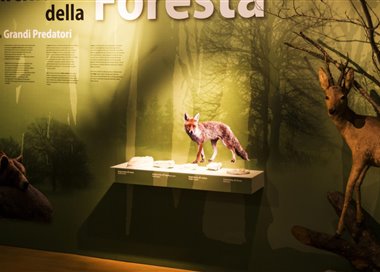
Julian Prealps Park
A richness of biodiversity …
Exhibition of the Mine of the Resartico Stream
For a long time the economic activity of Canal del Ferro has been influenced by the presence of a mine for the extraction of bituminous schist in the upper part of the valley of the Resartico stream, to which now the Exhibition of the Mine of the Resartico Stream is dedicated.

Moggio Udinese
Moggio Udinese is a small town in Val Canale that, in spite of the 1976 earthquake, has preserved its charm.
In Moggio Alto you will reach the abbey, rich in history.
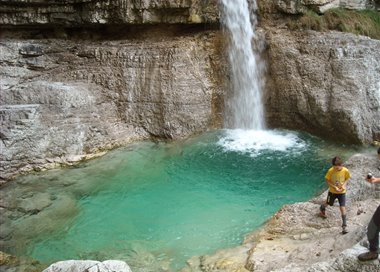
Val Alba Reserve
Crossed by the Alba Stream and by the Simon Stream, it features spectacular rocky ridges, waterfalls, crystal-clear streams and wild woods.
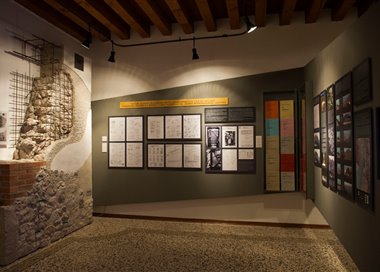
Permanent Exhibition Tiere Motus of Venzone
The permanent exhibition "Tiere Motus. History of an earthquake and of its people" is housed on the first floor of sixteenth-century Palazzo Orgnani-Martina, situated in Venzone's town centre.
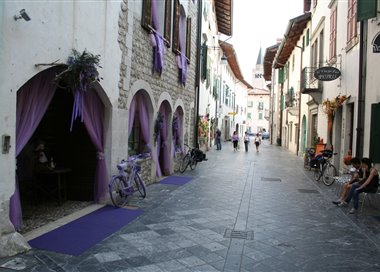
Venzone
Medieval charm
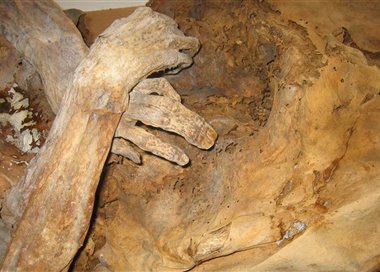
The Mummies of Venzone
Friuli Venezia Giulia, too, has its mummies!
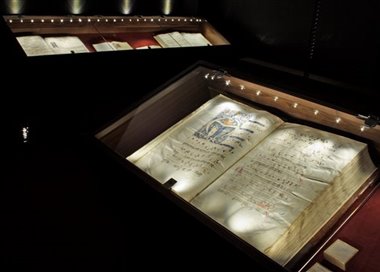
Parish museum and Cathedral Treasury of Gemona del Friuli
The presbytery of Gemona del Friuli dating back to 1360 today holds the new Parish Museum as well as the Cathedral Treasury and the historical parish Archive where the oldest known baptism records (dating back to 1379) are kept.
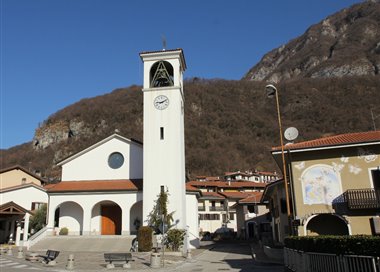
Bordano
Cycling amidst colourful butterflies.
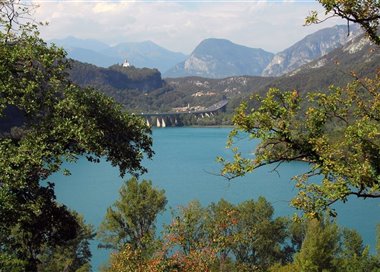
Cavazzo Lake
The Cavazzo lake is the widest natural lake of Friuli Venezia Giulia and wash with its waters the territory of three municipalities, Cavazzo Carnico, Bordano and Trasaghis.
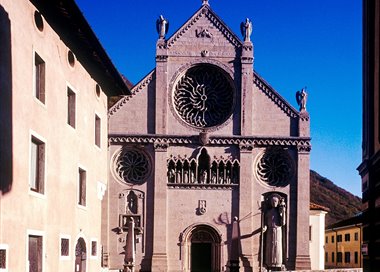
Gemona del Friuli
Gemona del Friuli, symbol of the tenacious and hard-working Fruilian character, dominated by a majestic cathedral.

City museum Palazzo Elti - Gemona del Friuli
The museum Palazzo Elti of Gemona exhibits paintings and sculpture of different ages and of remarkable historical quality.
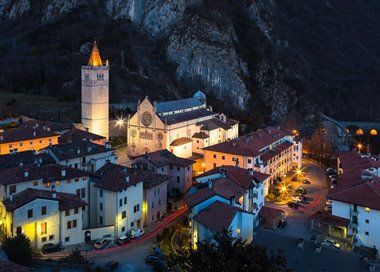
Former Church of St. Michael - Gemona
Frescoes, evidence of the 1976 earthquake.

Trasaghis
Trasaghis is part of the three municipalities which surround the lake, already of Cavazzo, and renamed "Lago dei Tre Comuni - The lake of the Three Municipalities.
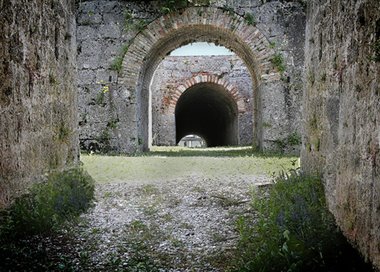
Osoppo fortress
Breathtaking views over the plain of the Tagliamento river

Osoppo
Once inhabited by Celtic populations, Osoppo acquired importance at the time of the foundation of Aquileia, becoming a Roman castrum.
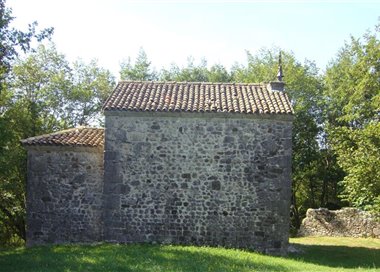
Church of San Rocco and Bars springs
Cycle through an orchid haven to the sound of water.
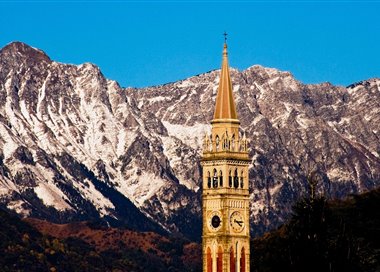
Buja
Buja is the birthplace of some of last century’s most talented etchers.
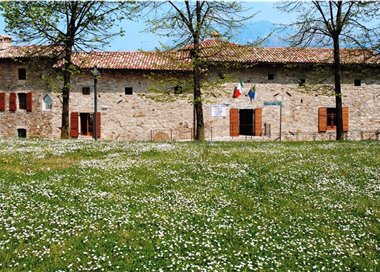
Museum of medal engraving art and museum of the community of Buja
Smelting and minting provide us with a wonderful snapshot of historical events in Friuli and Italy

The Church of Saint Peter Apostle - Buja
The church of the village Avilla and its treasures.
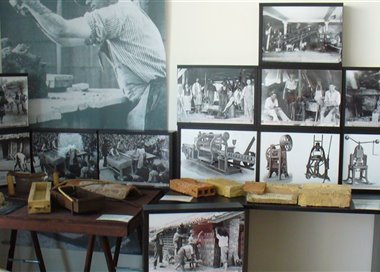
Brickwork Museum Treppo Grande
Average visit time 1 hour.
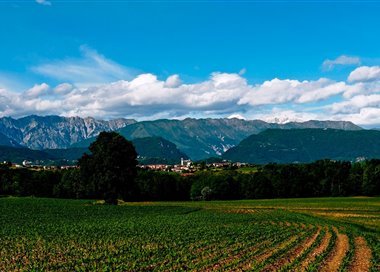
Treppo Grande
Treppo Grande lies among gentle morainic hills, created 9000 years ago by the accumulation of debris deposited by glaciers and then shaped by the joint action of atmospheric agents and waterways.
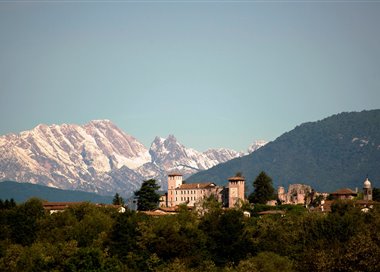
Colloredo di Monte Albano
Moraine hills and stunning landscapes
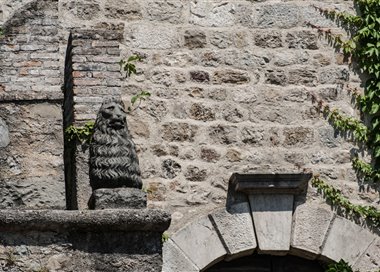
Colloredo di Monte Albano Castle
The manor sits on top of a hill at the centre of the moraine hills amphitheatre located North-east of Udine.

Cassacco
Cassacco was founded in a very favourable geographical position.
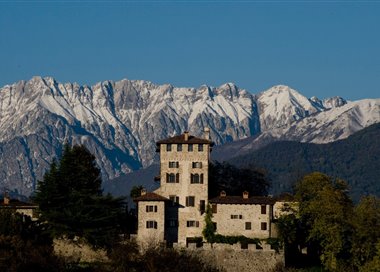
Cassacco Castle
Impressive manor on the ancient roman road Julia Augusta

Tricesimo
Tricesimo is situated at the feet of the first morainic hills, formed by the ancient glacier of the river Tagliamento.
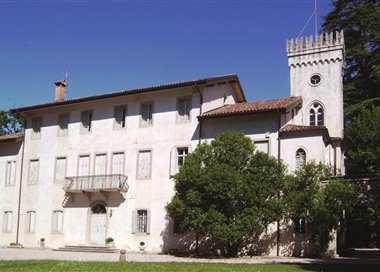
Tavagnacco
Certainly the origins of Tavagnacco are demonstrated from the Roman epoch. The place name reminds to the Latin proper name "Tabianus" or "Octavianus", who was probably the owner of the holding -, including the Celtic suffix "aco".
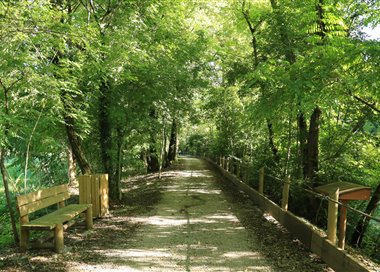
Friuli botanical park “Cormor”
The Friuli Botanical Park “Cormor” of Udine is a municipal park and botanical garden. It covers an area of 30 hectares and is bordered for its entire length by the Cormor creek from which it takes its name.
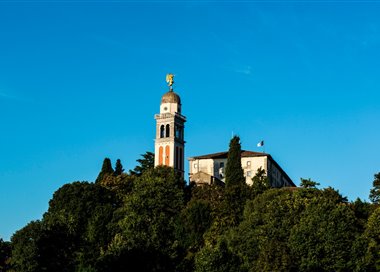
Udine
The capital of Friuli with its friendly squares, Tiepolo masterpieces and traditional osterias.
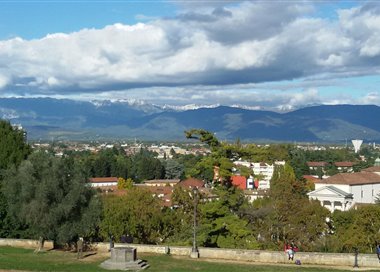
The castle and the civic museums
Udine’s Castle became a museum venue in 1806, and ever since then it has been delighting visitors with its richly decorated Salone del Parlamento (Parliament Hall), bedecked with 16th century frescoes, as well as with its civic museums.
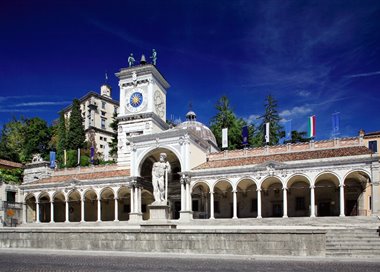
Piazza Libertà of Udine
Piazza Libertà in Udine is the city's oldest square. It represents the heart of Udine and is a starting point for many historical and cultural tours.
It is considered the most beautiful Venetian-style square on dry land and features a harmonious complex of Renaissance buildings.
It is considered the most beautiful Venetian-style square on dry land and features a harmonious complex of Renaissance buildings.
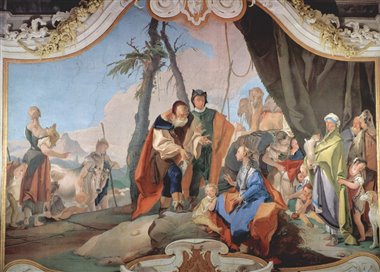
Museo Diocesano and Gallerie del Tiepolo
The "Museo Diocesano e Gallerie del Tiepolo" (Diocesan Museum and Tiepolo Galleries) are housed in the archbishop's palazzo where you can also admire artistic works by Giovanni da Udine, Palma il Giovane and Nicolò Bambini.
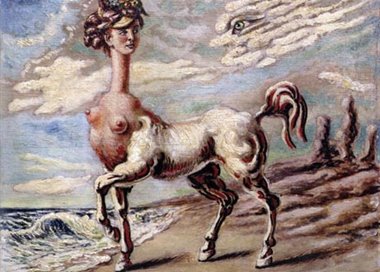
Casa Cavazzini. Modern and Contemporary Art Museum
Casa Cavazzini, in the centre of Udine, is a sixteenth-century complex renovated with the purpose of transforming it into a new cultural venue for the city of Udine.
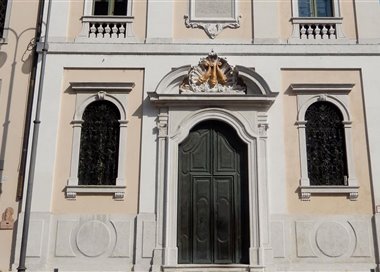
Oratory of Purity
The Oratory of Purity is situated on the southern side of Udine Cathedral.
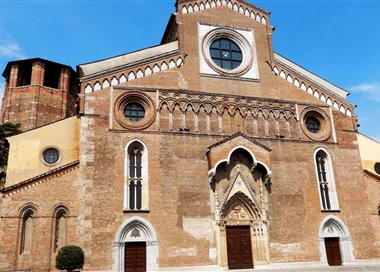
Cathedral museum of Udine
The cathedral museum of Udine, dedicated to the Patriarch Blessed Bertrand from Saint Geniès, is hosted in the 14th century chapels of Saint Nicholas and Corpus Christ and in the adjacent baptistery.
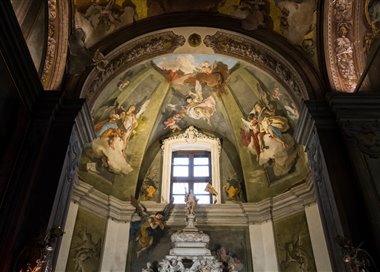
Udine Cathedral
Udine Cathedral is the city's most important and imposing church. It is situated in the charming Piazza Duomo, a few steps from the main streets of Udine's city centre.
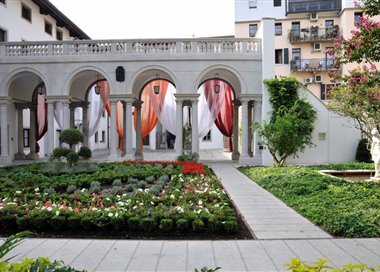
Valvason Morpurgo Palace
Valvason Morpurgo Palace of Udine hosts a section of the Gallery of Modern Art, dedicated to the theme of architectural design in Friuli.
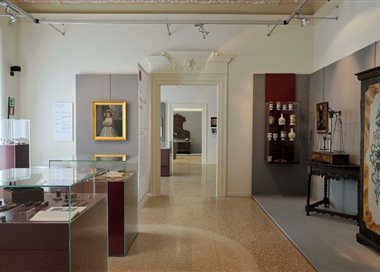
Friuli’s Ethnographic Museum
Friuli's Ethnographic Museum - New Museum of Folk Arts and Traditions is situated in the historic Palazzo Giacomelli in Udine, in the picturesque and lively Borgo Grazzano.

Pradamano
Rural village, quiet with typical Friulian architecture
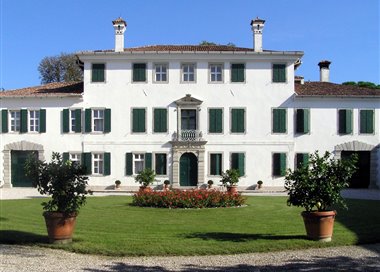
Pavia di Udine
Attractive villas, lush countryside, a long history, and plenty of art, events, food and wine.
